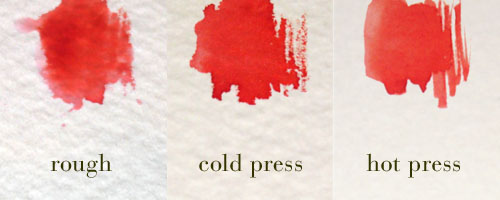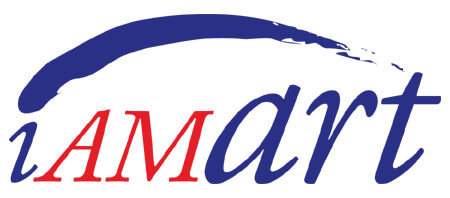watercolor paper - part 1
surface textures

Watercolor paper is available primarily in three types of surfaces: Rough, Hot Pressed and Cold Pressed.
Rough watercolor paper is described as toothy (or having a prominent tooth). It has a coarse, bumpy texture that will draw paint deeper into surface and results in a grainy, heathered look.
Hot-Pressed watercolor paper is the smoothest. Compared to rough watercolor paper it has almost no tooth. As a result, paint won’t sink in to hot pressed paper as much and will dry faster. Hot-pressed paper is good for illustrations, fast paintings and large washes of color. It is also the paper to choose for fine pencil lines or pen-and-ink work since the smooth surface does not interfere with drawing precise, continuous lines.
Cold-Pressed paper is not as toothy as rough paper but is more toothy than hot pressed paper. It’s the middle ground. It allows traditional watercolor effects such as letting paint puddle and settle down into lower spots as well as dry brushing over the high points in the surface. Cold-Pressed paper is the most common kind of paper used by watercolor artists.
Most paper manufacturers use these terms along with weights to describe their paper. But, there are still big differences between brands and their specific production methods. Papers can be made from cotton, wood pulp, or other fibers. They are also “sized” with different amounts and kinds of gelatin or starch to alter how absorbent the paper is. To figure out which kind of paper is right for you, it is very helpful to experiment with a variety of papers and see which works best for your style.
